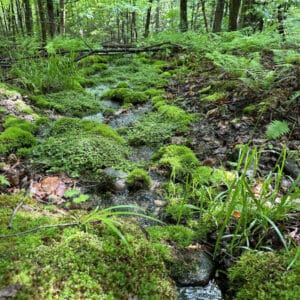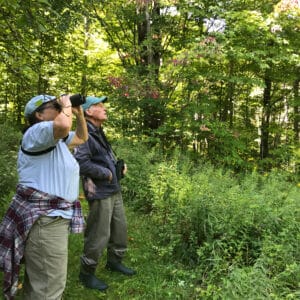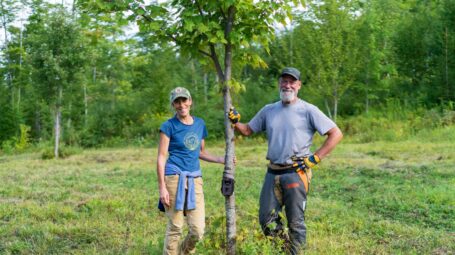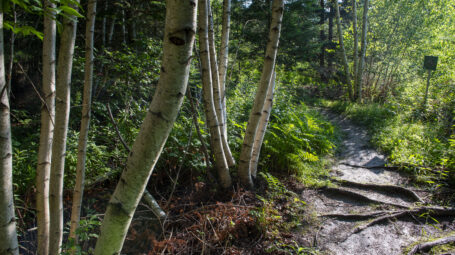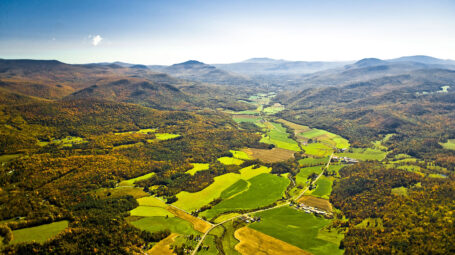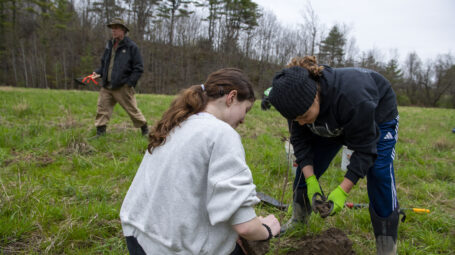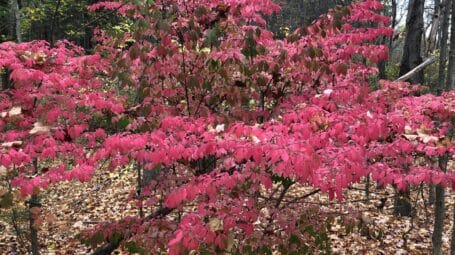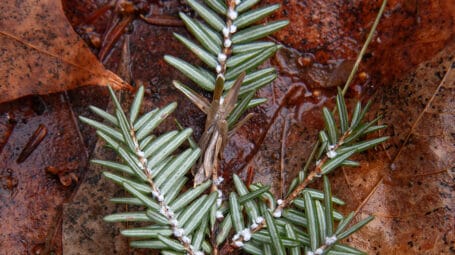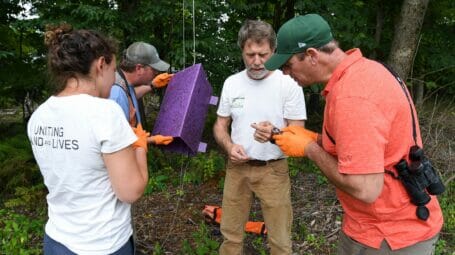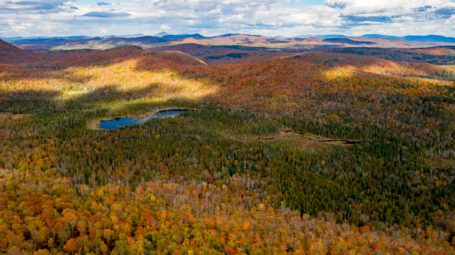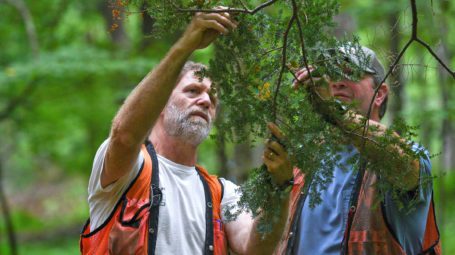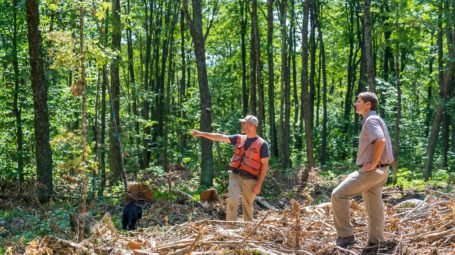Pratt family donates more land for birds, forest health, and recreation
Just in time for fall migration, we’ve got some great news for birds and forest lovers.
VLT’s Pratt Refuge property in Duxbury, Vermont is expanding to 514 acres, thanks to a generous gift of land from John Pratt. John is the son of Fred and Chris Pratt, who donated the adjacent 471 acres of forestland to us in 2019.
“We’re humbled by the generosity of the Pratt family and pleased to continue to partner with them,” said VLT forester Caitlin Cusack. “The meadows, wetlands, and woodlands they have conserved and donated safeguard critical natural resources and important habitat for myriad species, including the birds they are so passionate about protecting.”
A legacy of conservation
Fred and Chris began purchasing land on Ward Hill in South Duxbury in 1969. They built a rustic cabin and spent summers there with their two young children. Avid birders, the family has spotted and documented nearly 120 species of birds on their land, including several migratory songbirds. In the process, they became passionate about conserving the land.
Fred and Chris conserved their beloved refuge with VLT in 2000 and donated it outright 19 years later. Fred’s vision was for the land to remain open to the public as a place to slow down, connect with nature, and learn about bird conservation. Now his son, John, also a birder, has taken up the mantle of conservation. This fall he donated 43 adjacent acres along the northeast side of the property.
Protecting critical ecological function
The acquisition expands conservation protections within 55,000 acres of unfragmented forest just southeast of Camel’s Hump State Park. The region provides critical ecological function on a statewide level.
The newly acquired land contains a Northern Hardwood Seepage Forest, habitat that plays an important role in our state’s water quality. Forested wetlands filter groundwater and help mitigate flooding in our watersheds by absorbing and slowing runoff from heavy storms. They also aid fish and other aquatic species downstream by cooling and oxygenating the groundwater during hot summer months.
The new acreage also includes a stretch along the Dowsville Brook and several small streams that feed into the brook. These watershed elements protect the movement and migration of aquatic animals and plants between streams, rivers, and lakes.
The future of Pratt Refuge
Over the past five years, VLT has invested heavily in the Pratt Refuge. We’ve expanded the parking lot, designed new trails, and secured funding to construct the trails in a way that benefits people and wildlife.
This fall, we are partnering with Audubon Vermont and the Vermont Youth Conservation Corps (VYCC) to make several improvements at the refuge that will enhance habitat for migratory birds. The improvements, guided by the Audubon Silviculture with Birds in Mind program, will create more places for perching, nesting, and foraging for a wider variety of birds.
The project will also improve the overall health of the forest and strengthen its resilience to climate change. By identifying priority trees to keep, harvesting others, and leaving most of the downed wood on site, we are transforming the forest from a structurally simple, middle-aged woodland to a more complex habitat that mimics the conditions of old forests.
“As we develop a deeper relationship with this place and community, the pieces are starting to fall into place,” Caitlin said. “We’ve hosted several public events and look forward to the day we can welcome school groups to join us in learning from the land. We also look forward to seeing how the bird community responds to our management work.”
Next spring, we hope to secure funding to add an accessible trail to the property to encourage more people to experience its magic. These investments support our larger goal to make VLT lands inclusive and accessible for all.

